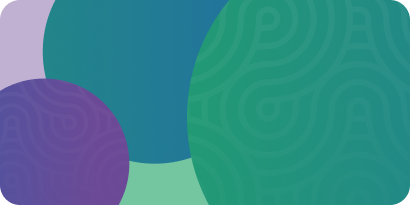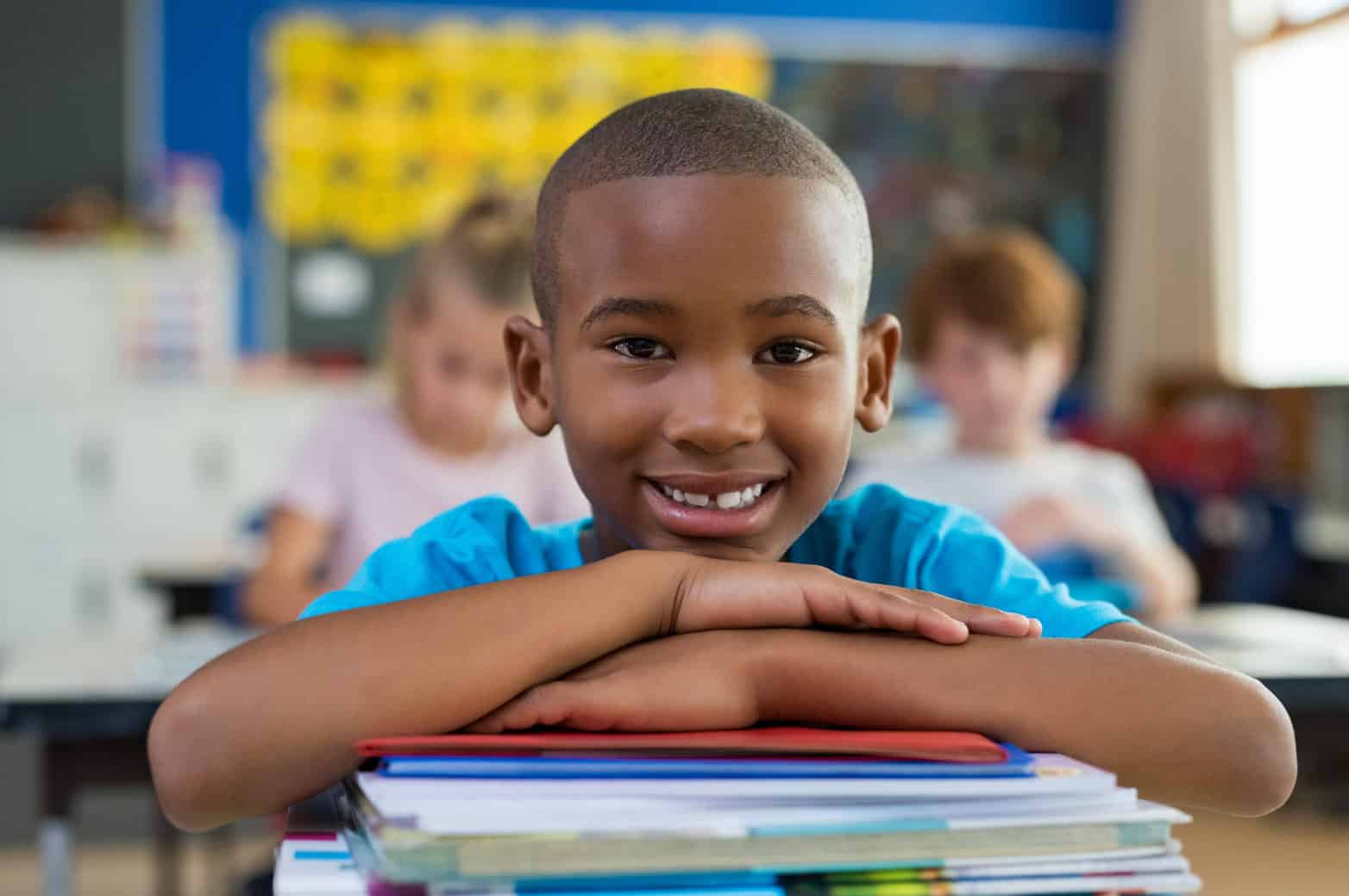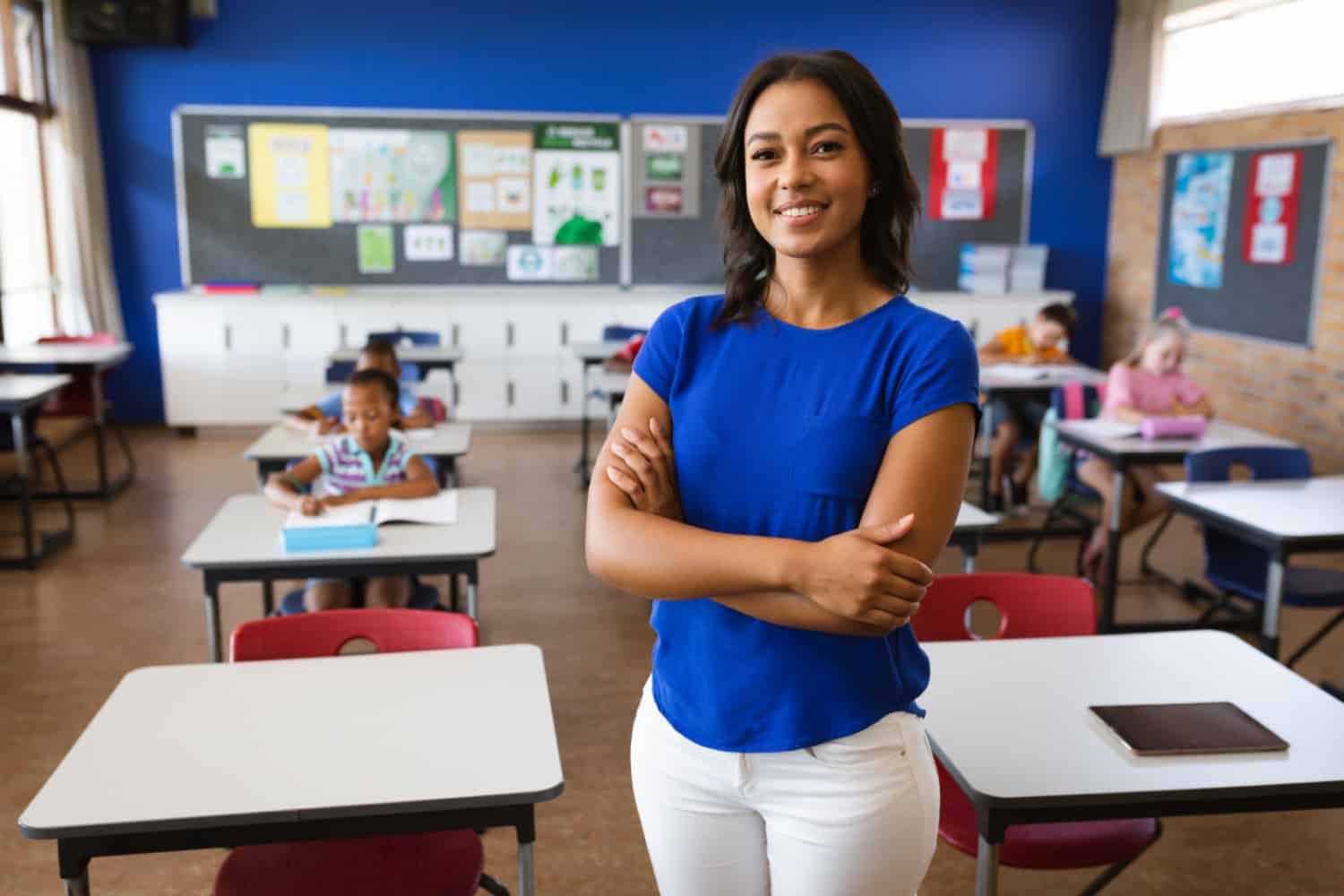Student Achievement Partners developed a bank of Lesson Guides for Equitable Instruction as models of leveraging diverse and complex texts to support high-quality literacy instruction. These multi-day lesson guides are part of a suite of resources centered on Supporting Equitable Literacy Instruction through Text Selection, Analysis, and Use. Hear about two teachers’ experiences implementing a Lesson Guide in their kindergarten classrooms, and find links to free resources and tips along the way.
Children bring an innate sense of curiosity and acceptance into the classroom. But how can we, as educators, harness these qualities to create joyful and enriching learning experiences for all students? Enter kindergarten teachers Kareba Williams (New Orleans, LA) and Darla Heuskinveld (Fontana, CA), who discovered a powerful tool towards this goal in Lesson Guides for Equitable Instruction.
When asked to describe their experience piloting The Proudest Blue Kindergarten Lesson Guide in one word?
- Darla: “Beautiful: I didn’t think that all of this would transpire from reading one story. It was such a beautiful experience not just for my students but also for me.”
- Kareba: “Inspiring: To…read [The Proudest Blue] and see the knowledge that it helped kids build…to know that there are books out there that talk about other cultures and learn about them in ways that enhance students’ vocabulary, their understanding of that culture, and just gives them the knowledge that everybody is different…it’s great.”
Read on for three key ways that you can create grade-level, joyful, and asset-based grade-level literacy instruction for all students—from kindergarten through high school!
Anchoring in diverse, complex texts that build knowledge
Great texts are both a foundation for and a vehicle to meaningful, affirming literacy experiences. Each Lesson Guide for Equitable Instruction centers around a rich, complex text with opportunities for students to engage with grade-level content and language, build knowledge about themselves and about the world around them, and examine aspects of identity, culture, and/or social justice. Every anchor text is also accompanied by a text set: a group of topically-connected texts and multimedia resources that expand students’ knowledge about what they are reading.
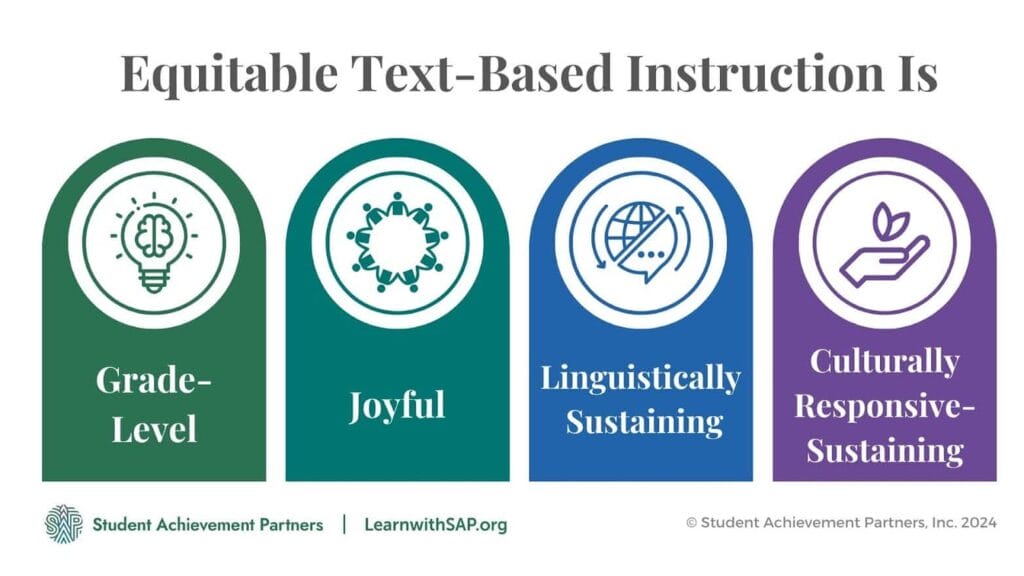
In this kindergarten lesson series, students read and reread The Proudest Blue by Ibtihaj Muhammad, a Muslim American saber fencer and Olympic medalist. This text shares the experiences of two sisters, Faiza and Asiya, as they navigate the reactions from their peers about Asiya’s hijab on the first day of school. Through this story and an accompanying text set about Islam, students learn about being Muslim, explore Asiya’s pride in wearing the hijab, and unpack the text’s beautiful figurative language.
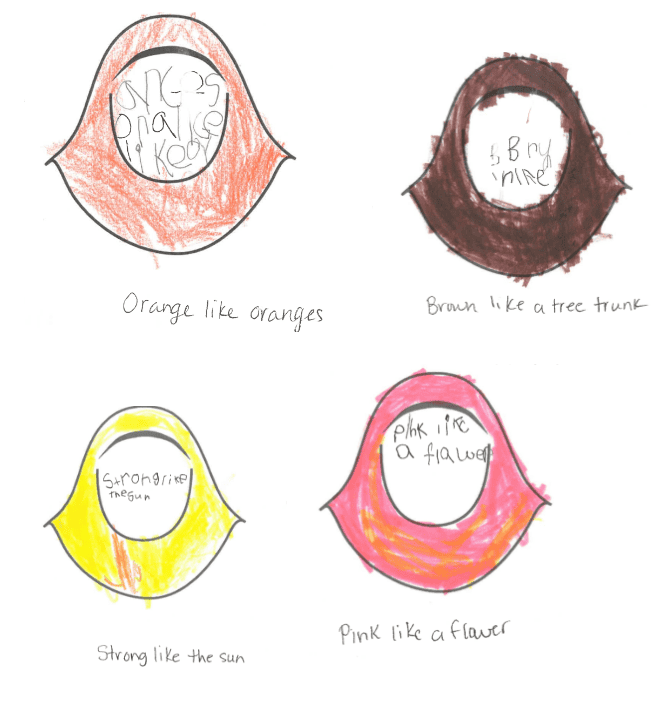

Tip: Use the Text Analysis Toolkit to help you select and/or reflect on texts. You can see a full analysis of The Proudest Blue using the Text Analysis Toolkit here.
Making the human connection
High-quality literacy instruction is a social act and invites who we are into the learning community. Each Lesson Guide focuses on text-based discussion and collaborative tasks, including integrating opportunities for students to think about who they are and how they relate to the content under study.
In The Proudest Blue lesson series, students began by interviewing a member of the class or school community to ask what they know and what they want to find out about hijabs. Later, students returned to this person to share new learnings and update their wonderings. Kindergarteners spent their time engaged in conversation and thinking together—through Turn & Talks, small-group discussions, and movement activities like Musical Circles. Darla and Kareba both reflected on the way these types of activities fostered a deepened sense of belonging and acceptance in their classrooms.
![“Hijab is a head cover wear by some people in the muslim comunute [community].”](https://learnwithsap.org/app/uploads/2024/07/proudest-blue-3.png)

Tip: Before starting a new unit or text, use Know Yourself, Know Your Students as a way to reflect on how your own identities and your students’ identities intersect with a text and topic.
Inviting students to discuss and critique the world around them
In addition to the critical work of making meaning from rich texts, our instruction must foster opportunities for students to think critically about what they are learning and how it connects to the world around them. This includes ways for them to take actions towards creating the world they want to see.
With The Proudest Blue, the kindergarteners in Darla’s and Kareba’s classes thought deeply about how Asiya’s hijab impacted her experiences at school, including how different classmates acted as bystanders or upstanders when she was teased. Students also talked and wrote about how they could make school an inclusive place, based on their reflections of Asiya’s experiences. See some of their inspired answers below:
![By learning about other peple [people’s] cuture [culture] and take up for them.](https://learnwithsap.org/app/uploads/2024/07/proudest-blue-5-1024x388.png)
![Knowing what make eaech [each] of us specal [special].](https://learnwithsap.org/app/uploads/2024/07/proudest-blue-6-1024x279.png)
These kindergarteners took in Asiya’s experiences wearing her hijab to school, demonstrated empathy and compassion, and connected that literacy experience to how they could show up for their own classmates and community.
Resource Connection: Learn about planning for critical thinking about the world with any text using the Culturally Relevant Pedagogy Reflection Tool.
Hear more from Darla and Kareba in the video below:
By embracing diverse and inclusive texts, students engage in meaningful conversations about their identities and those of others, inspire empathy and compassion, and build literacy skills and knowledge of the world. While the experiences shared here took place in a kindergarten classroom, these three strategies for creating grade-level, joyful, and asset-based grade-level literacy experiences can (and should!) happen at any grade level. Ready to engage in this work in your own classroom or school? Explore our resource bank for equitable literacy instruction and download a Lesson Guide relevant to your grade level.


